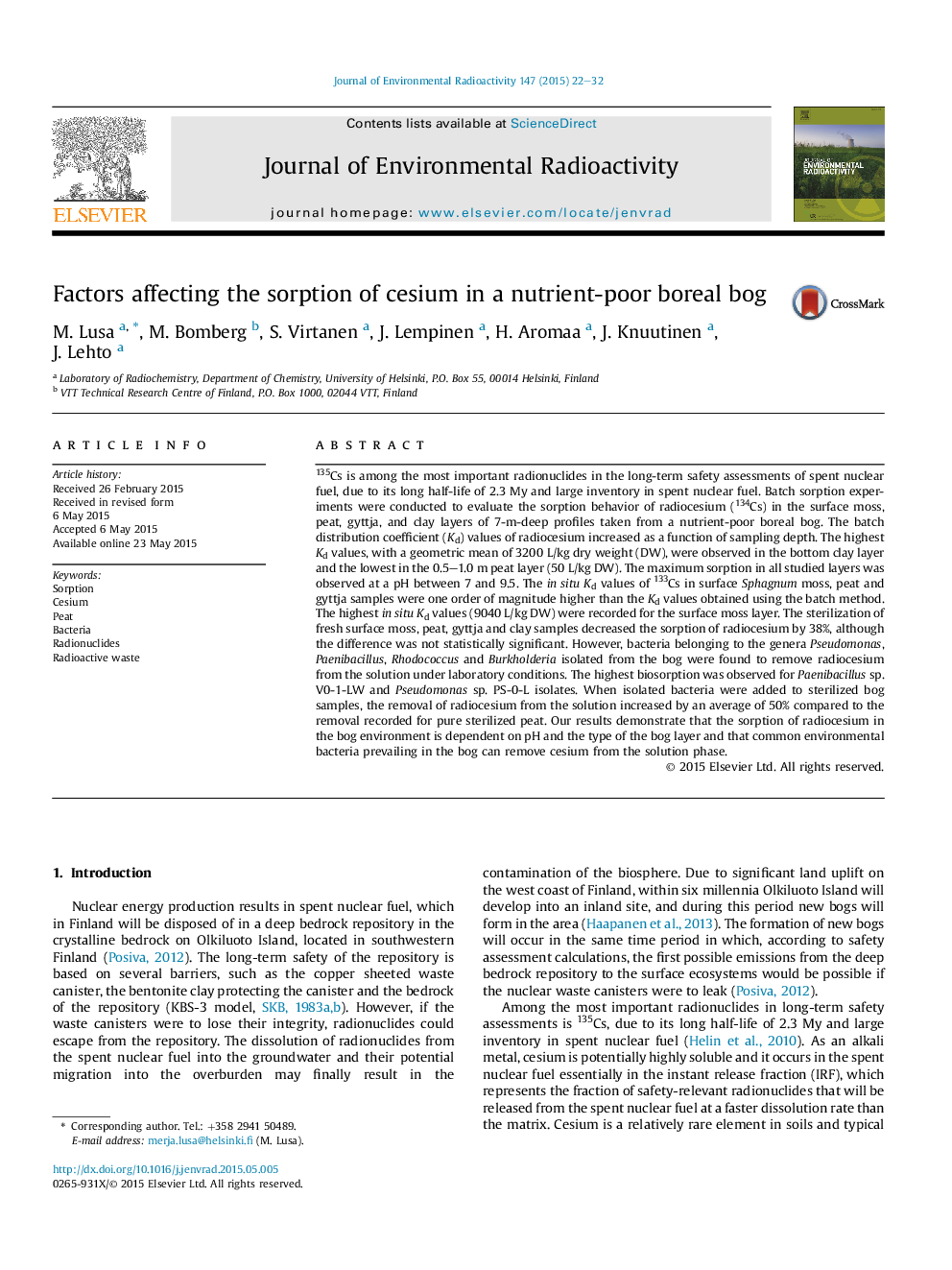| کد مقاله | کد نشریه | سال انتشار | مقاله انگلیسی | نسخه تمام متن |
|---|---|---|---|---|
| 1737845 | 1521586 | 2015 | 11 صفحه PDF | دانلود رایگان |
• pH and the type of the bog layer affect the sorption of Cs in a boreal bog.
• Radiocesium sorption was highest in the bottom layer consisting of clay.
• High in situ Kd values were observed in the surface layer.
• Bacteria isolated from the bog removed Cs from the solution.
• Plant uptake likely affects the sorption of Cs in the surface layer of the bog.
135Cs is among the most important radionuclides in the long-term safety assessments of spent nuclear fuel, due to its long half-life of 2.3 My and large inventory in spent nuclear fuel. Batch sorption experiments were conducted to evaluate the sorption behavior of radiocesium (134Cs) in the surface moss, peat, gyttja, and clay layers of 7-m-deep profiles taken from a nutrient-poor boreal bog. The batch distribution coefficient (Kd) values of radiocesium increased as a function of sampling depth. The highest Kd values, with a geometric mean of 3200 L/kg dry weight (DW), were observed in the bottom clay layer and the lowest in the 0.5–1.0 m peat layer (50 L/kg DW). The maximum sorption in all studied layers was observed at a pH between 7 and 9.5. The in situ Kd values of 133Cs in surface Sphagnum moss, peat and gyttja samples were one order of magnitude higher than the Kd values obtained using the batch method. The highest in situ Kd values (9040 L/kg DW) were recorded for the surface moss layer. The sterilization of fresh surface moss, peat, gyttja and clay samples decreased the sorption of radiocesium by 38%, although the difference was not statistically significant. However, bacteria belonging to the genera Pseudomonas, Paenibacillus, Rhodococcus and Burkholderia isolated from the bog were found to remove radiocesium from the solution under laboratory conditions. The highest biosorption was observed for Paenibacillus sp. V0-1-LW and Pseudomonas sp. PS-0-L isolates. When isolated bacteria were added to sterilized bog samples, the removal of radiocesium from the solution increased by an average of 50% compared to the removal recorded for pure sterilized peat. Our results demonstrate that the sorption of radiocesium in the bog environment is dependent on pH and the type of the bog layer and that common environmental bacteria prevailing in the bog can remove cesium from the solution phase.
Journal: Journal of Environmental Radioactivity - Volume 147, September 2015, Pages 22–32
